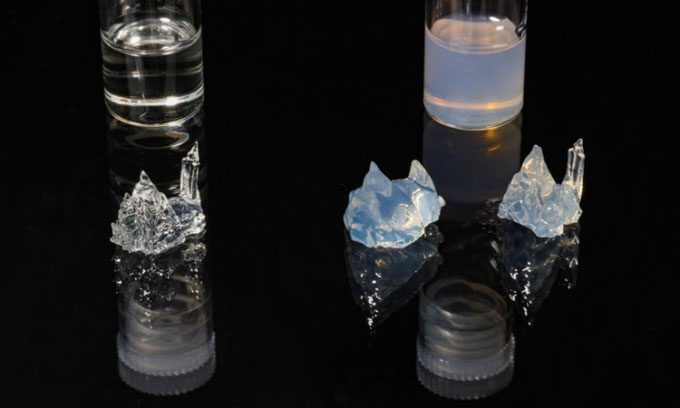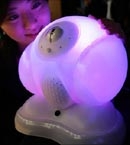Light-Based 3D Printing Technology Capable of Creating Small Objects in Seconds with High Resolution.
A research team at the École Polytechnique Fédérale de Lausanne (EPFL) has developed a light-based 3D printing technique that is approximately 30 times faster than traditional 3D printing methods, enabling the fabrication of objects in just 20 seconds instead of the usual 10 minutes. The new research was published in the journal Advanced Science on May 18.

EPFL’s light-based 3D printing technology offers fast speeds and can be performed with opaque resin. (Image: EPFL)
Traditional 3D printing involves stacking layers of material onto a substrate and allowing it to solidify. However, EPFL’s method takes a completely different and much faster approach.
“We pour resin into a container and then rotate it. After that, we project light into the container from different angles, causing the resin to solidify in areas where the energy accumulates beyond a certain threshold. This method provides high accuracy and can produce objects with a resolution similar to current 3D printing techniques,” said Christophe Moser, a professor at the Applied Photonics Laboratory at EPFL.
Fabricating objects this way is extremely quick, the research team noted, taking only a few dozen seconds instead of several minutes. Another advantage is the ability to print shapes with complex hollow sections without needing additional support structures, unlike flatbed printers.
Previously, the challenge with light-based 3D printing methods was that they could only use transparent resins, as any material with even a hint of color, such as the opaque resin used for artificial arteries in biomedical applications, would bend and distort the light passing through, drastically reducing resolution and resulting in unattractive printed objects.
In this new study, Moser and colleagues developed a technique that allows for the use of opaque resins. The team equipped a video camera behind the resin to calculate the path of light through it. After analyzing the transmitted light, they created an algorithm to correct for distortion and incorporated it into the printing instructions as the machine operates, ensuring precise energy distribution at each point.
The process of printing objects using opaque resin remains very fast. The research team printed a small model of Yoda (a character from the Star Wars series) in about 20 seconds. The product also has a resolution similar to that of transparent resin, approximately 1/10 mm. The research team is working to increase the resolution by another 100 times, aiming to achieve precision at the micrometer level.




















































